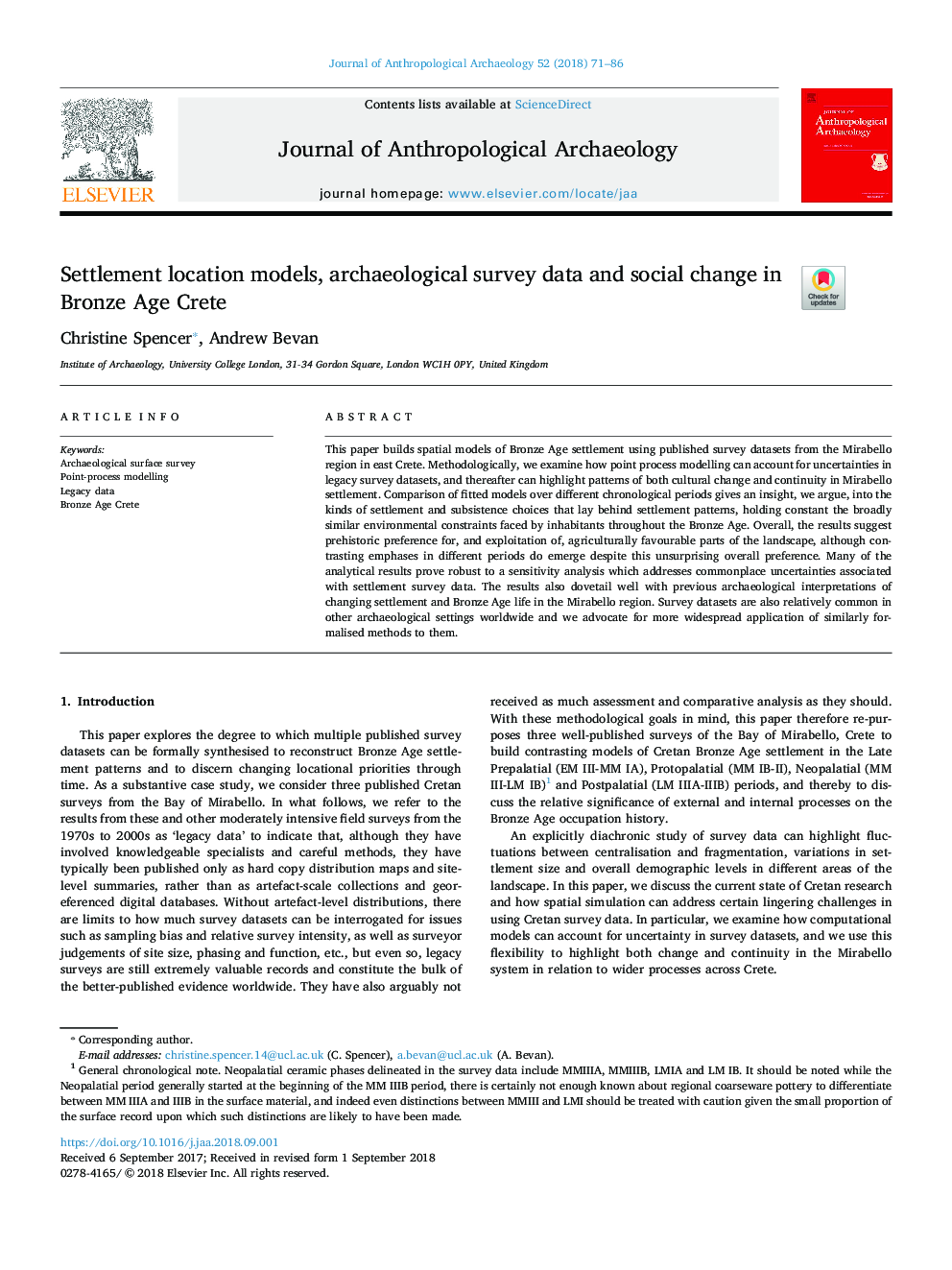| Article ID | Journal | Published Year | Pages | File Type |
|---|---|---|---|---|
| 11005160 | Journal of Anthropological Archaeology | 2018 | 16 Pages |
Abstract
This paper builds spatial models of Bronze Age settlement using published survey datasets from the Mirabello region in east Crete. Methodologically, we examine how point process modelling can account for uncertainties in legacy survey datasets, and thereafter can highlight patterns of both cultural change and continuity in Mirabello settlement. Comparison of fitted models over different chronological periods gives an insight, we argue, into the kinds of settlement and subsistence choices that lay behind settlement patterns, holding constant the broadly similar environmental constraints faced by inhabitants throughout the Bronze Age. Overall, the results suggest prehistoric preference for, and exploitation of, agriculturally favourable parts of the landscape, although contrasting emphases in different periods do emerge despite this unsurprising overall preference. Many of the analytical results prove robust to a sensitivity analysis which addresses commonplace uncertainties associated with settlement survey data. The results also dovetail well with previous archaeological interpretations of changing settlement and Bronze Age life in the Mirabello region. Survey datasets are also relatively common in other archaeological settings worldwide and we advocate for more widespread application of similarly formalised methods to them.
Keywords
Related Topics
Social Sciences and Humanities
Arts and Humanities
History
Authors
Christine Spencer, Andrew Bevan,
